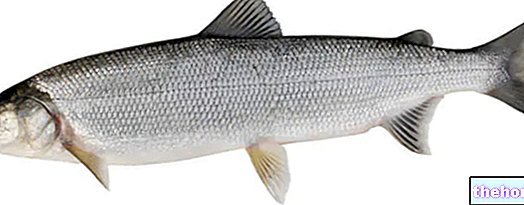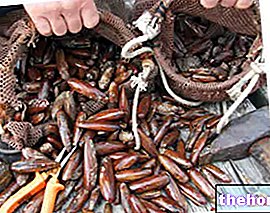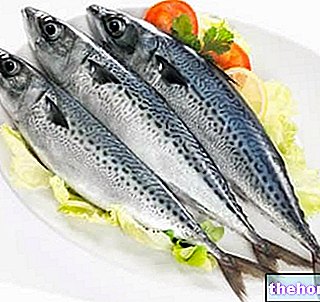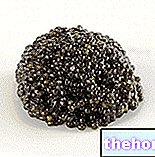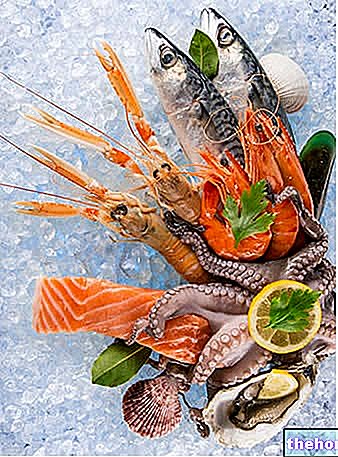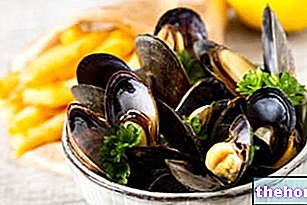Generality
The stockfish or stockfish it is a preserved food of animal origin; it is the eviscerated and beheaded body of Cod, then dried by exposure to the cold-dry northern winds. Stockfish is therefore a typical northern product, especially from Norway.

Cod (or cod White) is a bony fish belonging to the family of Gadidae, Type Gadus, Species Gadus morhua.
Cod colonizes mainly the northern side of the Atlantic Ocean and is absent in the Mediterranean basin, instead colonized by the hake (Merlucius merlucius), morphologically similar but belonging to different Family, Genus and Species.
The term stockfish or stockfish (even only "rapier") derives from the union of nouns stock or stokk (stick - to store) e fish or vish (fish), then stick-fish (for hardness) or fish to be stored (on special sticks exposed to the wind) or fish to be stored (in reference to the supply of ships).
Production cycle of stockfish
The stockfish is processed immediately after the fish is caught. The cod caught are immediately gutted and beheaded; the body is then divided in two from the back to the tail which, however, is kept intact to keep the two edges together. At this point, the fish are placed on special wooden supports (without touching each other) and left in the cold wind (temperature just above 0 ° C) in the absence of rain, for about 3 months (from February to May). The cycle ends with the maturation of the stockfish in a closed, cold and ventilated environment for another 60 days.
The finished food has about 30% of the AW (Activity Water) initial.
Discovery of stockfish in Italy
The discovery of the stockfish took place in 1432 by chance, by the shipwrecked Venetian merchant Pietro Querrini.
On 25 April 1431 Querrini sailed from Candia (island of Crete) bound for Flanders (present-day Belgium) on the Querrina, a merchant ship loaded with spices, cotton, wax and more. On 14 September of the same year, after passing Cape Finistere (now western France), the merchant encountered a storm that pushed him west, beyond Ireland, adrift as far as Iceland. On December 17, with the ship totally uninhabitable, Querrini divided the surviving crew into two makeshift boats: a lifeboat with 18 men (of whom nothing is known) and a launch with 47 souls. , on January 14, 1432 the merchant moved north to Norway where, once again, he was shipwrecked to land on the island of Rost (Lofoten archipelago). Here, the crew (already reduced by 16 men) wandered for 11 days before to run into the local fishing population. Extremely cordial, the latter offered food (including stockfish) and accommodation to the unfortunate sailors, who on 15 May left for Bergen (south-Norwegian city) and from there finally reached Venice on 12 October 1432.
Diffusion of stockfish in Italian cuisine
Stockfish has always been a popular product, therefore "almost" absent in the old recipe books written and handed down by the cooks of high-ranking families (aristocrats, clerics and upper-middle-class).
"L" Opera ", by Bartolomeo Scappi, mentions stockfish as a culinary-restaurant innovation." L "Apicio Moderna" by Francesco Leonardi also reports a recipe based on stockfish, as does the "New economic Milanese cook" by Giovanni Felice Luraschi, published in 1853, describes a preparation.
Finally, from the second half of the 19th century, with "Theoretical practical kitchen" by Ippolito Cavalcanti and "The science in the kitchen and the" Art of eating well "by Pellegrino Artusi (who nevertheless did not speak very well of it), we witnessed the" total advent recipes with stockfish (and also with cod) throughout the Italian peninsula.
Culinary preparation
At retail, for hygienic reasons, the stockfish is vacuum packed. Upon purchase, it is hard, dry and emanating a rather intense odor. It must be thick enough and have a light color, devoid of yellowish hues.
The preparation of the stockfish is quite long but can be summarized as follows:
- Beating: can be done with a wooden pestle and is necessary to soften the fibers of the dried fish.
- Soaking: in fresh, fresh water for 3-4 days, changing the water frequently or placing it in running water.
- Pre-cooking: preceded by washing and drying; the stockfish is then cut, placed in a pan with cold water and brought to a boil over low heat for 10 minutes.
- Specific cooking of the recipe: variable according to the preparation, but stockfish always requires long and delicate cooking; better to avoid mixing it and, to turn it, shake the pot.
Cod alla Veneta - The Video Recipe
Cod alla Veneta
Problems with playing the video? Reload the video from youtube.
- Go to the Video Page
- Go to the Video Recipes Section
- Watch the video on youtube
Nutritional characteristics
ATTENTION! In the food composition tables, stockfish appears as a derivative of Blue whiting or pier fish.
Stockfish is a food which, analyzed in dry form, has a very high nutritional and energetic concentration. In reality, once rehydrated, stockfish possesses quantities of energetic macronutrients comparable to those of fresh food; on the other hand, the vitamin concentration and, in part, also the saline one, are heavily affected by the preservation and rehydration process.
Stockfish is very rich in high biological value proteins, it contains few fats and only some traces of soluble sugars; from the saline point of view it provides good doses of potassium, while, as regards the vitamins, a good concentration of niacin (vit. PP) is highlighted.
Soaked stockfish is a low-calorie food and, unlike cod, it can be contextualized in most diets and diet therapies. Clearly, the preparations that require the generous addition of cooking oils are to be consumed with due moderation, as a single dish accompanied with fresh vegetables and a maximum of 50g of bread, preferably wholemeal or rye. Stockfish often appears in the list of foods contraindicated in the diet against hypertension; in reality, once soaked it has a rather low sodium content (unlike cod, which maintains very high sodium concentrations even after soaking).
Nutritional composition of Stockfish - Reference values of the INRAN Food Composition Tables
Fish, Molluscs, Crustaceans Anchovies or Anchovies Garfish Alaccia Eel Lobster Herring Lobster Whitebait Bottarga Sea bass (Sea bass) Squid Canocchie Scallops Canestrelli (Sea scallops) Capitone Caviar Mullet Monkfish (Monkfish) Mussels Crustaceans Dates Sea Fruits Fish Flour Fauna Fish stock Prawns Crabs Spider crab (Granceola) Halibut Sea salad Lanzardo Leccia Sea snails Prawns Cod Molluscs Octopus Hake Ombrina Oysters Sea bream Bonito Pangasius Paranza Anchovy paste Fresh seasonal fish Blue fish Puffer fish Swordfish Plaice Octopus (Octopus) Hedgehog of Sea Amberjack Salmon Sardines Sardines Scampi Cuttlefish Mackerel Sole Stockfish Surimi Sushi Telline Tuna Canned tuna Mullet Trout Fish roe Bluefish Clams OTHER FISH ARTICLES Categories Alcoholic Food Meat Cereals and derivatives Sweeteners Sweets Offal Fruit Dried fruit Milk and derivatives Legumes Oils and fats Fish andpeach products Salami Spices Vegetables Health recipes Appetizers Bread, Pizza and Brioche First courses Second courses Vegetables and Salads Sweets and Desserts Ice creams and sorbets Syrups, liqueurs and grappa Basic preparations ---- In the kitchen with leftovers Carnival recipes Christmas Light diet recipes Women's, mom's and dad's day recipes Functional recipes International recipes Easter recipes Celiac recipes Diabetic recipes Holiday recipes Valentine's Day recipes Vegetarian recipes Protein recipes Regional recipes Vegan recipes

